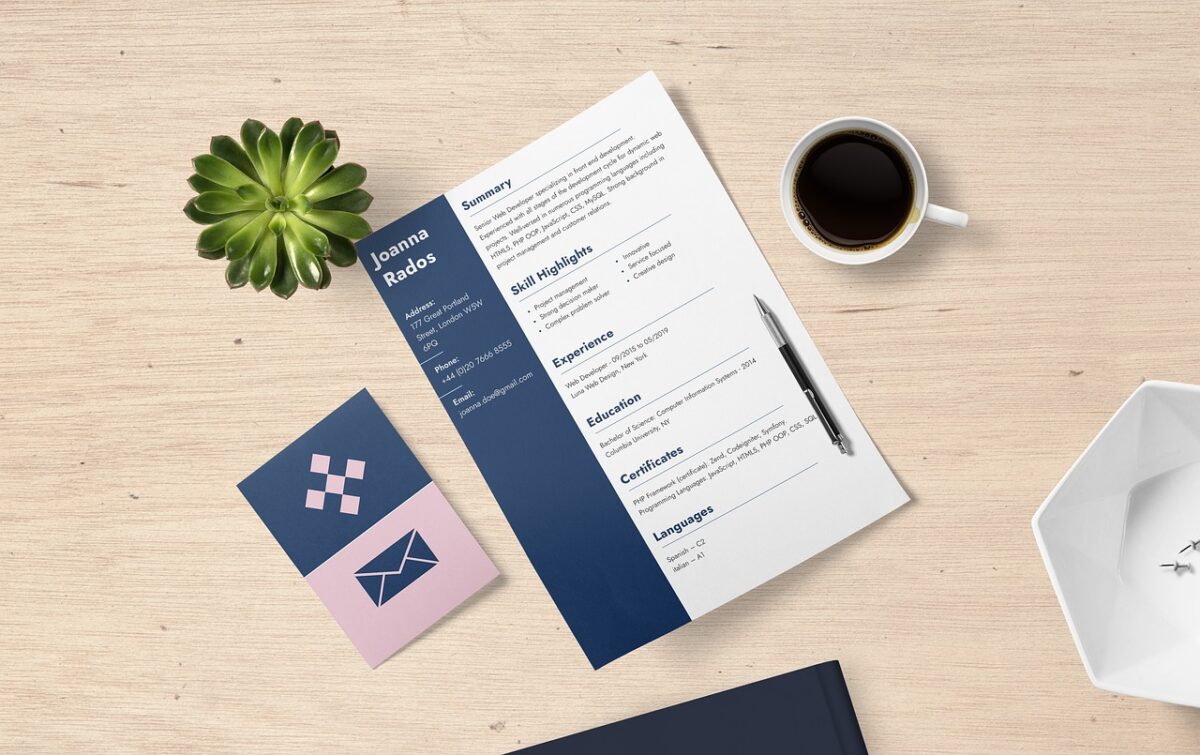Test Your Job Description Writing Knowledge This Weekend

Crafting effective job descriptions and job ads is an art that goes beyond mere listing duties; it’s about communicating the essence of your company and its role to potential job seekers. A well-written job description captures the responsibilities and skills required and embodies your organisation’s culture, enticing the right candidates to apply. Recognising this, the weekend presents a perfect opportunity to refine this crucial aspect of recruitment. Why not utilise this quieter time to delve into our blog, How To Upgrade Your Job Descriptions This Weekend? It’s an invaluable resource designed to elevate your recruitment strategy.
We’ve also designed a quiz to complement this learning journey, making it fun and insightful for employers, entrepreneurs, and HR professionals. This interactive tool is tailored to test and enhance your job description writing skills, ensuring you can easily attract top talent. Whether you’re a seasoned expert or new to the realm of writing job descriptions, this quiz offers a unique chance to reassess and improve your approach, ensuring every job description you craft resonates with the ideal job seekers. Join us in transforming the way you communicate roles, and let’s set the foundation for a more engaging and successful recruitment process.
Quick Links:
- Writing Job Descriptions: Questions And Answers
- Conclusion And Links To Recruitment Resources
- Effective Job Descriptions FAQs
Highlights And Key Takeaways:
- You can use our quiz as a dynamic tool to refine your job description writing skills.
- You can use our recruitment resources to take the first step towards transforming your hiring process into an engine of success.
Writing Job Descriptions: Questions And Answers

Dive into our curated selection of Questions and Answers designed to challenge your understanding and improve your expertise in writing compelling job descriptions and job ads.
1. What is the first step in crafting an effective job description?
- A: Understanding the role’s requirements
- B: Posting the job online
- C: Scheduling interviews
Correct Answer: A. Understanding the role’s requirements is crucial for a foundational understanding before you start writing. For more on this topic, read our blog What Is The First Step In Crafting An Effective Job Description?
2. Which element is essential to include in a job description to attract qualified candidates?
- A: A long list of responsibilities
- B: Company history
- C: Skills and qualifications needed
Correct Answer: C. Highlighting the skills and qualifications needed is key to attract the right candidates. You can tackle this task by following our guides – What Qualifications Should I Include In A Job Description? and What Skills To Include In A Job Description?.
3. How can you ensure your job description is inclusive?
- A: Use industry jargon
- B: Limit the required qualifications
- C: Use gender-neutral language
Correct Answer: C. Using gender-neutral language makes your job description more inclusive. For further tips on writing inclusive job descriptions, read How To Write An Inclusive Job Description.
4. What’s a common mistake in job descriptions that can deter potential applicants?
- A: Being too brief
- B: Not mentioning the company culture
- C: Listing too many requirements
Correct Answer: C. Listing too many requirements can intimidate and deter potential applicants.
5. How can you ensure you have covered all aspects of the job description?
- A: Guesswork
- B: Use our blank job description template
- C: Copy from a competitor
Correct Answer: B. Utilising our blank job description template ensures you cover all necessary aspects.
6. How can you speed up the job description writing process?
- A: Skip proofreading
- B: Use our job description examples, editable and available for thousands of job titles
- C: Write less detail
Correct Answer: B. Our job description examples can significantly speed up the writing process, from Commis Chef Job Description to Assistant Property Manager Job Description.
7. Why is a clear job title crucial in a job description?
- A: It ensures the job posting is searchable
- B: It makes the description longer
- C: It’s easier to write
Correct Answer: A. A clear job title ensures the job posting is searchable and attracts the right candidates. Read our blog on Job Title Examples to find the right job titles to attract qualified applicants.
8. What is a benefit of including a salary range in a job description?
- A: It increases the number of unqualified applicants
- B: It sets clear expectations and attracts candidates who are comfortable with the range
- C: It makes the job description look more professional
Correct Answer: B. Including a salary range sets clear expectations and attracts candidates who are comfortable with the offered salary. For further insights on this topic, delve into Should You Include Salary In A Job Description?
9. How does mentioning company culture in a job description benefit the recruitment process?
- A: It increases the word count
- B: It ensures only locals apply
- C: It attracts candidates who align with the company’s values and work environment
Correct Answer: C. Mentioning company culture attracts candidates who align with the company’s values and work environment. We explored this topic in greater depth in our articles – How To Infuse Company Culture And Brand Values Into Your Job Descriptions and How To Describe Work Environment In Job Descriptions.
10. Why are bullet points effective in job descriptions?
- A: They make the description easier to read and highlight key points
- B: They require less writing
- C: They can be used instead of full sentences
Correct Answer: A. Bullet points make the description easier to read and allow for key points to be highlighted effectively.
11. What role does a call to action play in a job description?
- A: It fills space at the end of the document
- B: It prompts the reader to apply or take the next step in the application process
- C: It is a formal requirement
Correct Answer: B. A call to action prompts the reader to apply or take the next step in the application process, increasing conversion rates. For examples and guidance on crafting CTAs, explore our guide What Role Does A Call To Action Play In A Job Description.
12. How can specificity in job responsibilities impact the quality of applicants?
- A: It confuses potential applicants
- B: It attracts more qualified and suitable candidates by clearly outlining expectations
- C: It reduces the number of applications
Correct Answer: B. Specificity in job responsibilities attracts more qualified and suitable candidates by clearly outlining what is expected of them. For more detail, explore our blog – What Are Job Responsibilities?
13. What is the impact of using inclusive language in job descriptions?
- A: It limits the applicant pool
- B: It makes the description longer
- C: It widens the pool of potential candidates by ensuring the job feels accessible to all
Correct Answer: C. Using inclusive language widens the pool of potential candidates by making the job feel accessible to all.
14. Why should you avoid using internal jargon in job descriptions?
- A: It can confuse or alienate potential applicants who are not yet familiar with your company’s specific language
- B: It makes the job description look less professional
- C: It is easier to write with jargon
Correct Answer: A. Using internal jargon can confuse or alienate potential applicants who are not familiar with your company’s specific language. For tips on selecting the best words for a basic job description, explore – How To Choose The Best Words When Writing A Job Description.
15. How can including career progression opportunities in a job description influence applicants?
- A: It discourages experienced candidates
- B: It attracts ambitious candidates interested in growth and development within your company
- C: It has no impact on the applicant’s decision
Correct Answer: B. Including career progression opportunities attracts ambitious candidates interested in growth and development.
16. What is the importance of updating job descriptions regularly?
- A: It ensures that the descriptions remain accurate and reflect current company needs
- B: It increases the length of the job description over time
- C: It’s a legal requirement
Correct Answer: A. Regular updates ensure that job descriptions remain accurate and reflect the current needs of the company.
17. How does showcasing benefits and perks in the job description affect the application rate?
- A: It overwhelms candidates with too much information
- B: It has no effect on the application rate
- C: It can significantly increase the application rate by highlighting the value the company offers beyond salary
Correct Answer: C. Showcasing benefits and perks can significantly increase the application rate by highlighting the value the company offers.
18. What’s the effect of requiring too many qualifications in the job description?
- A: It ensures only the best candidates apply
- B: It can deter potentially qualified candidates who might see themselves as not meeting every listed criterion
- C: It makes the job seem more prestigious
Correct Answer: B. Requiring too many qualifications can deter potentially qualified candidates who might not apply thinking they don’t meet every listed criterion, potentially missing out on highly capable individuals who could excel in the role.
19. How does clarity in the job description’s language benefit the recruitment process?
- A: It shortens the recruitment process
- B: It ensures all applicants have a clear understanding of the role and expectations, reducing confusion and unqualified applications
- C: It makes the job seem more challenging
Correct Answer: B. Clarity in the job description’s language ensures applicants have a clear understanding of the role and expectations, leading to more qualified applications.
20. Why is it important to mention the working environment and team dynamics in the job description?
- A: It helps fill space
- B: It attracts candidates who are looking for a specific type of work culture, leading to better job satisfaction and retention rates
- C: It is only relevant for certain industries
Correct Answer: B. Mentioning the working environment and team dynamics attracts candidates seeking a specific type of work culture, enhancing job satisfaction and retention.
Conclusion And Links To Recruitment Resources

In wrapping up our exploration of writing a well-crafted job description and job ad, we invite you to delve deeper into our recruitment resources. Our meticulously designed tools, including the blank job description template, job description examples, job advert template, and the comprehensive SME Recruitment Guide, stand ready to transform your recruitment strategy. Each resource is crafted precisely to streamline your hiring process, ensuring you attract the right talent efficiently and effectively.
We strongly encourage you to use the quiz as a dynamic tool to refine your job description writing skills. It’s more than just a test; it’s an opportunity to engage with key principles and practices that will elevate your recruitment content. By incorporating structured templates and examples from our resources, you can significantly improve the quality and efficiency of your job description writing process. These tools are not just aids; they are stepping stones towards mastering the art of recruitment communication.
Your journey towards recruitment excellence continues. We invite you to explore further recruitment resources and job advertising services we offer, designed to enhance every facet of your recruitment process. From attracting top-tier talent to mastering the nuances of effective job ads, our suite of tools and guides is at your disposal.
Embrace the opportunity to elevate your recruitment strategy. Visit our resources section today and take the first step towards transforming your hiring process into an engine of success.
Effective Job Descriptions FAQs
Here we tackle common questions from employers, Hiring Managers, and HR professionals on how to write job descriptions:
Gathering information for a job description involves a meticulous approach to ensure accuracy and effectiveness: 1. Consult with the Hiring Manager: Discuss the role’s requirements, job responsibilities, and ideal candidate profile with the Hiring Manager or the Team Leader to understand the job’s responsibilities, requirements, and ideal candidate profile. 2. Review Similar Roles: Look at existing job descriptions for similar job titles within your organisation or industry benchmarks to identify common qualifications and duties. 3. Interview Job Holders: Speak with current employees in similar roles to gain insights into daily tasks, necessary skills, and performance expectations. 4. Analyse the Role:Evaluate the role’s significance within your organisation, its goals, and how it fits into the team and company structure.
Assessing a job description involves several key considerations to ensure it aligns with organisational needs and attracts the right candidates: 1. Clarity and Conciseness: Ensure the job title and duties are clearly defined. Avoid jargon and ensure it is understandable by someone outside your company. 2. Relevance: Check that the key responsibilities, requirements, and qualifications are current and align with the role’s objectives. 3. Inclusivity: Review language to ensure it’s inclusive and welcoming to a diverse range of candidates. 4. Compliance: Ensure the description complies with employment laws and industry regulations.
Leveraging AI, specifically ChatGPT, for crafting job descriptions can streamline the process. To do so: 1. Be Specific:Provide clear details about the role, including job title, job duties, necessary skills, and qualifications. 2. Mention Your Goals: Outline what you aim to achieve with the job description, such as attracting diverse candidates or highlighting certain company values. 3. Utilise Tools: For a more refined approach, use bespoke AI tools designed for HR purposes. For instance, you can try the bespoke and finely-tuned AI job description tool at https://hiringpeople.io. It’s designed to instantly create a job description for any job title and is available to try for free.
When listing skills required for a job, follow these guidelines: 1. Distinguish Between Essential and Desirable:Differentiate between skills candidates must have to be considered and those that would be advantageous. 2. Be Precise:List specific skills relevant to the job. For example, instead of saying “good communication skills,” specify whether the role requires excellent written, verbal, or presentation skills. 3. Consider Soft Skills: Alongside technical skills, include soft skills like teamwork, leadership, and problem-solving abilities. 4. Reflect on the Role’s Needs: Focus on skills directly impacting the role’s objectives and your company’s goals.



